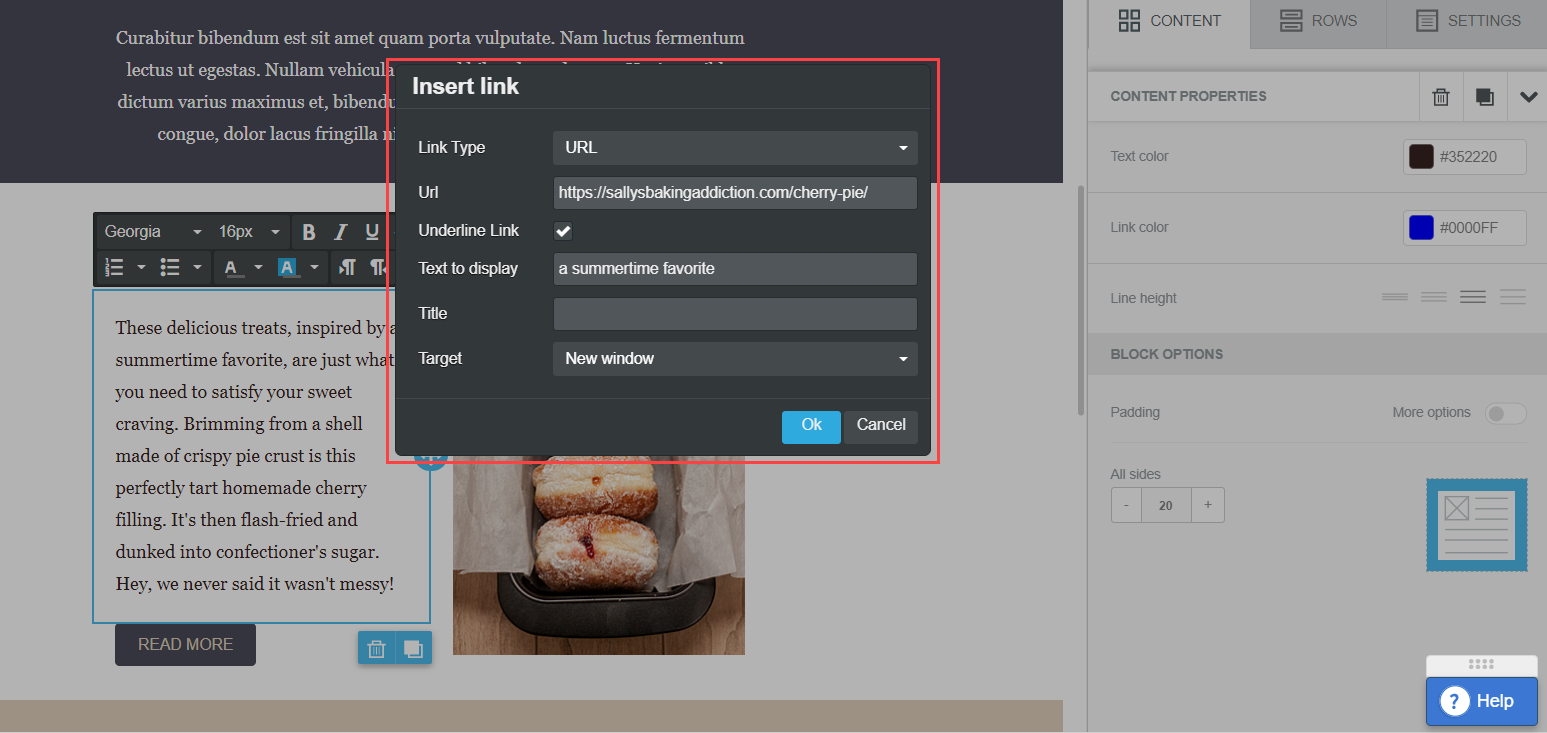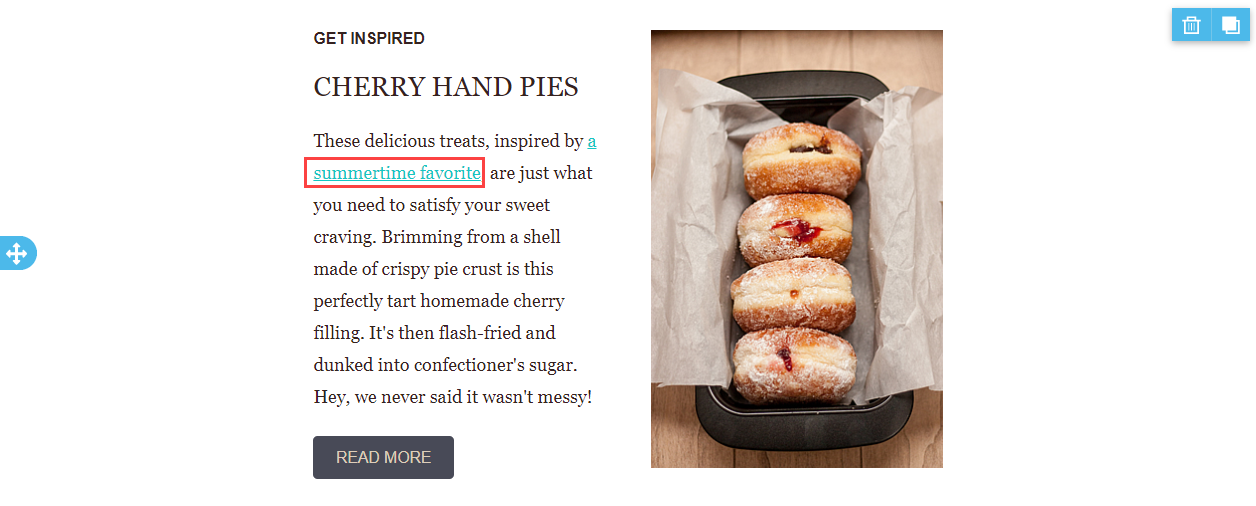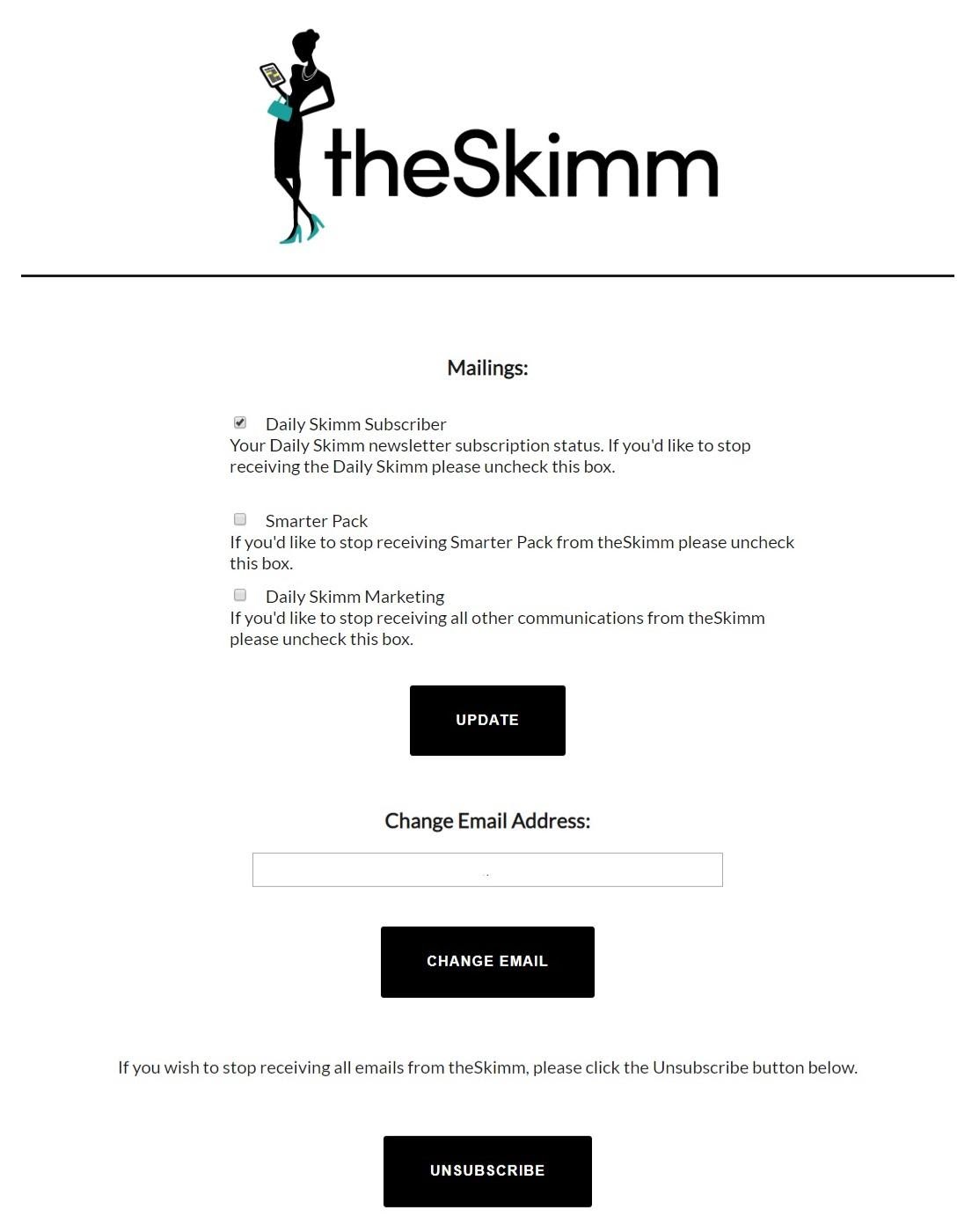As important as emailing is for everything from marketing to generating e-commerce sales to increasing readership, you’d think we’d all be good at it. Well, we’re not.
As an email marketing provider, we are the first person our clients call when their emails aren’t getting through to their clients. But, like most email providers, the problem is rarely with the deliverer of the email. All email senders live in an email ecosystem, and it’s important to understand how to manage that email ecosystem. Doing so will ensure vital functions in your company can be executed.
In this blog, we’re taking on the topic of email deliverability to help you succeed in making sure your emails get through to your clients.
What is email deliverability?
Great question! Campaign Monitor defines email deliverability as an email successfully arriving in a recipient’s inbox. Getting past the email server is one thing (read: email delivery), but when it comes to deliverability, email providers consider a variety of factors before allowing just anything to enter your subscriber’s inbox.
Glossary of factors affecting email deliverability
Let’s start with an easy breakdown of the technical terms you’ll see when discussing email deliverability.
ESP
ESP stands for email service provider. It’s a platform that sends marketing emails for you. Think Mirabel’s Marketing Manager, MailChimp, or Campaign Monitor. They give you an interface to send emails and track email marketing metrics, such as bounce, open, click-through, and unsubscribe rates.
ESPs really care about obeying the laws of the email ecosystem because their servers get shut down if you send unsolicited emails and don’t follow the rules of the game. They deal with dozens of internet service providers who are capable of throwing up roadblocks for bad behavior. Keeping a positive sender reputation is a big part of the cost of running an email service provider.
ISP
An ISP, or internet service provider, is a service that provides internet access. In addition to providing cable and internet, these companies, like Xfinity, AT&T, Verizon and Cox, provide users with an inbox as well.
They are part of a large policing force that monitors the web for spam. If they see spam from an email service provider’s client, they block that particular company and all emails from that email service provider. Thus, ESPs have a lot to lose by allowing a customer to send spam out through their service.
Inbox providers
These are your Gmails, Yahoo! Mails, and Outlooks. They simply provide inboxes where all your newsletters, Bed Bath & Beyond coupons, and political donation solicitations can live.
Bounces
Bounces are a common email marketing problem. When your email doesn’t reach your subscriber, it’s likely because it bounced. Because there are a multitude of reasons why your email didn’t make it, bounces can be broken up into two categories: Hard and soft.
Hard bounces occur when the subscriber doesn’t exist. This could be because someone signed up for your list with a fake, misspelled, or improperly formatted email address. Anyway, you need to remove that address from your list immediately.
Soft bounces happen when a subscriber does exist but doesn’t necessarily get your message because the inbox is full or an automated reply message is in place. You don’t need to remove these subscribers from your list right away, unless the soft bounces continue to occur. (Mirabel’s Marketing Manager, for example, will attempt to resend at least five times to a soft-bounced email address. After that, it’s labeled as a hard bounce.)
Sender reputation
Think of your sender reputation like a credit score. A good reputation lets ISPs and inbox providers know that you are trustworthy and your emails are safe to enter the Promised Land that is your subscriber’s inbox. A good sender reputation is paramount to email deliverability.
Sender reputation can be evaluated based on your IP address, which is the unique number attached to your internet-connected device. It’s also evaluated based on your domain, which is the unique name of your website that subscribers type in to access your content. For example, mirabelsmarketingmanager.com is our domain.
The IP reputation is often the reputation of your email service provider’s server, but the domain reputation is solely your responsibility. Even if your provider has a good reputation, your emails can still get blocked by various ISPs because your domain has a bad reputation.
So, how can you boost your domain reputation? Monitor your email engagement metrics, especially bounce rates and spam complaints. The lower the number, the better news for you. Avoid spam traps and blacklists, which we’ll elaborate more on in just a bit.
Finally, consider the domain reputation of the links you provide in your emails. Tools like WatchGuard and Sender Score can help you check domain and IP address reputations so you don’t include anything that could potentially classify you as spam.
SPF
Not sun protection factor, but sender policy framework. Setting this up is essential to protecting your domain from being fraudulently used and subsequently classified as spam. SPFs allow your domain to be connected to a specific IP address. These all live in a directory of sorts called the DNS (domain name server).
When you send an email, ISPs and inbox providers consult the DNS to verify that the email is definitely from your domain. If the IP associated with the sending domain doesn’t match what the DNS has, per your SPF, the email in question will either be rejected completely or sent to the spam folder. This is the number one reason why our clients’ emails do not make it to inboxes.
DKIM
DomainKeys Identified Mail is an authentication process that boosts email deliverability by helping to confirm an email has come from the domain it claims to be from. This is similar to an SPF, but rather than being affiliated with an IP address, a domain gets assigned a digital signature (read: unique encrypted key private to the sender).
Receiving ISPs and inbox providers then search the DNS for a public key matching the sender’s private one. If the keys match, the email in question has not been tampered with in transit and is safe to enter the inbox.
Feedback loop
A feedback loop, in the context of email marketing, is a service that shares, you guessed it, feedback from subscribers with you. When a subscriber marks your email as spam, this is a complaint that, with a feedback loop in place, will be reported to you. While most ISPs and inbox providers offer this feature, you still need to set it up. Luckily, Return Path has covered feedback loops at length.
Blacklists
This is a list you do not want to be on. Blacklists are collections of domains and IP addresses that have been noted for being spammy. How do your emails get classified as spam?
Well, someone could use your domain to send spam emails, which is why an SPF is great to implement. You could also get caught in a spam trap, which we’ll elaborate on next.
It’s possible to recover from being blacklisted if it only happens once. If it keeps happening, you have a problem.
Spam traps
Spam traps are fake email addresses that look real. They’re used by anti-spam companies who offer their services to ISPs in order to catch spammers, hackers, and unsuspecting marketers who buy email lists to unnaturally grow their subscribers. The spam trap usually consists of putting real-looking email addresses in lists, so the minute you send to that address, you’ll be caught.
It’s foolproof, and your email-scrubbing software won’t catch it, as email-scrubbing software only checks for bad email addresses, not realistic-looking fake ones. Sending an email to a spam trap will get you automatically classified as spam, so don’t buy email lists. It’s the fastest way to find yourself in email jail.
Best practices for email deliverability
You put in all this work to make sure your domain(s) and IP address have good reputations. You avoided spam traps and blacklists, implemented a sender policy framework and DKIM signature, and scrubbed your list clean of addresses associated with high bounce rates. Email deliverability is a hefty part of the equation, but the other part is making sure all this effort wasn’t for nothing. Your emails need to be consistently delivered and, if you’re lucky, read.
At this point, what you want to avoid most are spam complaints. They’ll rupture the foundation of your email deliverability by attacking your sender reputation. Spam complaints are inevitable, as many people mark emails they don’t want to read as spam, unaware of the negative repercussions this has on a sender. If you’re guilty of this, mark individual emails you don’t care to look at as read, or simply delete them. If you no longer want any emails from a specific sender, unsubscribe.
To preemptively combat spam complaints, incorporate the following email deliverability best practices when building your email lists and campaigns:
Include a double opt-in strategy
Having a double opt-in strategy can reduce bounce rates and lower unsubscribes. Most importantly, the reinforcement can result in fewer spam complaints. How? A double opt-in means that once someone has signed up to your list, he or she receives a confirmation link that must be clicked in order to officially receive your messages.
It requires a little extra effort from recipients, but by confirming their opt-in, they acknowledge that they genuinely want to receive your campaigns and will be less likely to mark your emails as spam.
Plus, double opt-ins weed out real email addresses from fake ones, as a spam address can’t confirm the second opt-in. Now, you won’t end up on a blacklist for inadvertently emailing a spam address.
Make the most of your sender names and subject lines
They always say not to judge a book by its cover, but when it comes to emails, subscribers tend to judge a book (email) by its cover (subject line). It’s super important that your sender names and subject lines capture attention in a non-spammy way.
For starters, your sender’s name or email address should never explicitly mention “do not reply” because it’s insincere and could lead to subscribers flagging your message as spam before even opening it. If you want to emphasize that the from address is automated and unable to respond to replies, include a disclaimer in the body of the message.
Try to humanize your sender. Feature the name of a prominent figure at your company or your company’s name with a matching email address. If I were to send out an email, I’d show up in your inbox as Rachel from Mirabel Technologies <rrockwell@mirabeltechnologies.com>.
For subject lines, don’t use all-caps, RE: or FWD:. Spammers use this tactic often because it’s effective at grabbing attention. However, ISPs, inbox providers, and subscribers have grown weary of these sort of subject lines for that exact reason and will classify these emails as spam without a second thought.
Maintain consistent frequency
If you always send two emails per week, switching to four can negatively impact your sender reputation. Subscribers familiar with your cadence will notice the change and assume email bombardment is on the horizon, which could result in a spam complaint. Temporary modifications to your frequency for holidays, special events, or a limited series happen, but ongoing inconsistent sending is what you want to avoid.
Feature consistent, mobile-friendly design
Another place where consistency affects email deliverability: Design and content. Your website looks a certain way because it embodies your brand’s identity. Your emails should mirror that identity, too. Don’t confuse subscribers with non-cohesive branding; it could lead to them marking your email as spam.
Also like your website, your emails should be mobile-friendly. Over 50% of email opens occur on mobile devices, and a lack of mobile-friendliness can result in a spam complaint. Many inbox providers auto-optimize for mobile, so there’s no excuse for your emails to not be compatible.
Include plain-text/HTML versions
Have you ever opened an email where the images didn’t automatically load? Same. Not all inboxes are equipped to receive your gorgeous campaigns, which is why you need to include a plain-text version. ISPs and inbox providers look favorably on plain-text emails because they know exactly what’s inside. Recipients will still get the primary message you want to communicate, diminishing any reasons to mark your email as spam.
Avoid shortening URLs
If you use external links in your emails, avoid using shortened URLs. They can be convenient, but they hide a link’s destination, which makes them popular among spammers. If you’re worried full URLs will ruin the look of your email, include hyperlinks, which are simply clickable words that are linked to an external URL. They’re much more visually appealing than URLs, but they allow you to include the full thing.


Segment your email list
There are many ways to go about email list segmentation, but the gist is grouping together subscribers based on demographic similarities or common interests. You give them the content they really want, and your open rates will soar while your unsubscribe rates plummet.
This is where data is good. Target, for example, would never send its entire email list a promotion for new tennis rackets, because not all of its customers care about the latest in sports equipment. Sending a mass email without list segmentation could result in an influx of spam complaints.
Instead, Target’s email marketers likely use data, such as past purchases and browsing history, to create a segment of customers who will most appreciate an email about tennis equipment, not mark it as spam, and eventually make a purchase.
Make unsubscribing simple
An easily accessible unsubscribe method will help you maintain a positive sender reputation. Subscribers can simply unsubscribe instead of clicking link after link, until the frustration boils over, coming to a head in the form of a spam complaint.


It’s almost too easy for someone to mark a sender as spam. That’s why it happens so often! It’s vital that you make the unsubscribe process just as easy. Plus, your campaigns will remain CAN-SPAM compliant.
Unsubscribes are much better than spam complaints, as the former won’t impact your sender reputation and ultimately, your deliverability.
Email deliverability recap
Email deliverability is more than reaching your subscribers. You could reach your subscribers in the form of spam, but that’s definitely not what you want. You want that coveted spot in their inboxes, and to achieve that, you must consider a number of factors affecting email deliverability:
- Make sure your IP address and/or domain has a good sender reputation, so ISPs and inbox providers will let your email in inboxes.
- Avoid spam traps by not purchasing email lists. List companies often scrape data from the web, and that data may be “seeded” with inactive, fake, or bad email addresses. Purchasing email lists and sending emails to recipients who haven’t “opted in” is the easiest way to end up on a blacklist.
- Check your feedback loops for spam complaints. Immediately scrub those subscribers, as well as invalid, spammy, and inactive email addresses from your email list to reduce your bounce rates and negative hits on your sender reputation.
- Implement SPFs and DKIM signatures so ISPs and inbox providers can verify that you’re allowed into a desired inbox.
Once you’re in the inbox, follow these email deliverability best practices to make sure your emails take up a permanent residency:
- Create a double opt-in strategy.
- Use a real, recognizable name and email address as your sender, and avoid the use of spammy words in your subject lines.
- Send at a consistent cadence.
- Feature consistent, mobile-friendly designs.
- Include plain-text/HTML versions of each email.
- Avoid shortening URLs when linking externally.
- Segment your email list.
- Make unsubscribing simple.
Yes, sending a successful email campaign requires plenty of effort. Yet, when you consider that email marketing is rapidly becoming the number one way to drive revenue, it makes everything worth it.
SEE FOR YOURSELF
Watch an overview to learn how B2B marketing automation by Mirabel Technologies can help you increase traffic, optimize your funnel, drive more leads, improve conversions, and boost ROI — at a price you can afford!

